2009 Museums Australia National Conference, Work in Progress. Newcastle, 17 – 20 May 2009.
Day 3 Wednesday 20 May 2009, Session 14.3 Community Partnerships – Help or Hindrance? Concert Hall, Newcastle Town Hall, 11.00am-12.15pm.
Conference Paper
In 2007, Peter Scrivener[1] wrote a report for Hawkesbury City Council on community partnerships, and in it, he presented a summary of a partnership between the Camden Historical Society and Camden Council. In brief, it stated:
These two parties are proud of the amicable relationship they have nurtured over many years, during which time the museum has gained considerable support as an acknowledged ‘model’ local museum demonstrating exemplary practice. Currently [that is in 2007], the council-owned building is being renovated to share foyer space with the adjacent council library… They have never had a formal arrangement but recently have signed a one-page Memorandum of Understanding… [the memorandum] simply outlines the spirit and intended community outcomes that can flow from greater linkages and integration between the two parties. (Scrivener, 2007)
This partnership is the subject of this paper.
At a local level, community partnerships are one form of collaboration between voluntary organisations and councils that can bring measurable benefits to participating stakeholders. They encourage a sustainable solution to the achievement of goals at a time when there are increasing demands on a limited set of resources while at the same time maintaining that despite their advantages, community partnerships are not a silver bullet. They can be compared to a living organism which needs constant attention and nurturing and, if neglected, will wither and die.
My interest in community partnerships was initiated by research on the three local historical societies in our area and the role of their local museums in their communities (Willis, 2007b). In that work, which is the subject of a forthcoming paper (Willis, 2009), I maintain that these organisations occupy a privileged place in their community through storytelling and contribute to the development of community identity and place-making. They have received the official endorsement of their local councils and in some cases, have entered partnerships with them.
Scholarly work on community partnerships between local councils and historical societies is virtually invisible, although there has been some useful work done by Peter Scrivener (Scrivener, 2007), and others (Sandell, 2004). These limited efforts have shown that these type of community partnerships have mixed results.[2] This field of endeavour deserves the attention of researchers and hopefully this paper will shine some light on a dark corner.
The setting for this case study is the Camden Local Government Area (LGA), which is on the rural-urban interface on south-western fringe of Sydney. The LGA is the fastest growing in New South Wales with a population of 52,000 in 2008 and an annual growth rate that has been in excess of 15 per cent per year. The Camden LGA has a strong community sector with over 250 voluntary organisations (Willis, 2007a: 18).
The two stakeholders in this community partnership are the Camden Historical Society which was founded in 1957 and has 160 members. Its main aim has been the promotion of local history through public education and memorialisation, which includes managing a local museum. The second member of the partnership is Camden Council and its Library Service. The library has two branches, Camden and Narellan, a borrowing collection of 70,000 items and 17 full-time equivalent staff. It should be noted that the Camden Family History Society is also part of this arrangement but is not the subject of this paper. The author also needs to declare his interest in this subject as an insider through his membership of the Camden Historical Society.
This paper will examine the Camden partnership using Jupp’s four simple processes that he felt were essential for a successful partnership. They are: ‘developing clear objectives; ensuring that each partner benefits individually as well as helping to achieve a common goal; building in evaluation; and finally, developing understanding and trust between partners’ (Jupp, 2000, p. 8). The last factor will be treated first.
Understanding and Trust
The basis of the current partnership agreement between the council and the historical society is to be found in the trust and understanding that has developed over the last 52 years between these two organisations.
Since the foundation of the historical society (1957) the council has come to support and endorse the story of Camden as it has been told by the society. From the beginning the society has presented a conservative view of local history based around the pioneer legend and the town’s material progress. This view of the world was strengthened in 1970 when the society opened a small pioneer museum with the assistance of the Camden Rotary Club. The council supported the venture by providing space for the museum for rent-free use. It did this without a formal agreement being put in place. This was followed in short order by society members erecting three public monuments to Camden pioneers located outside the council chambers in 1977, 1978 and 1979. The council then supported the expansion of the museum in 1980, and again in 1999, again without any formal agreement with the historical society.
By promoting an officially sanctioned view of Camden’s social history the historical society has achieved a privileged position in the community and become the custodian of the Camden story. In recent years the representation of the Camden story in the museum has broadened, as Australian history has in the remainder of the country, to include Aborigines, women, rural labourers and other aspects of country town life. The museum has also become a site where, according to Robyn Till (Till, 2004), the local community has derived a sense of belonging from storytelling and where a continuity of generations in the one locality, according to Sonya Salamon (Salamon, 2007:3), have contributed to the essence of a strong community identity and sense of place.
Clear Objectives
The next stage in the development of the partnership agreement occurred in 2002 when Camden Council issued a draft strategic plan for the future of Camden library service, called Vibrant Places, People Spaces. [3] The aim of the plan was twofold: firstly, the creation of a new community space around the existing library and museum building; and secondly, the formalisation of the existing arrangements between the council and the society to facilitate the building project.
The plan envisaged a new integrated complex as a multi-purpose centre which could function as ‘a unified educational, recreational, cultural and tourist complex’.[4] The library was to be a public space that could strengthen community cohesiveness by becoming a ‘community hub’ and ‘communal meeting place’. According to Sonya Salamon, this type of space could act as an arena where the residents could develop a sense of community that bonded them to the place (Salamon, 2007: 13). The library would, according to the council, provide an opportunity for local residents to ‘embrace Camden’s culture and sense of community’ and contribute to place-making (Camden Council, 2002: 3).
The new complex was based on the re-adaptive use of two historic buildings: the Camden School of Arts building (1866), which was later the Camden Town Hall then council offices; and secondly the Camden Temperance Hall (1867), which functioned as the Camden Fire Station between 1916-1993. By the end of 2007 the $2.3 million re-development had resulted in a single building with a common street entry after the former laneway between the buildings had been covered with a glass roof to create a galleria. The view of the council’s general manager of the completed complex was that it provided ‘the community with a stronger sense of belonging and place’ and ‘a place based and people focused facility’.[5]
In the end the co-location has had a number of advantages for both stakeholders. For the library, according to Kathryn Baget the library services manager, it has meant that it has had one stop convenience, better building maintenance and security, and a sharing of infrastructure with the historical society; a type of convergence, a notion that has received attention in recent times including this conference (Stapleton, 2009).[6] As far as the historical society was concerned it gained a street entrance on John Street, enhanced security, a new lift to the first floor and improved fire safety.
The second part of the strategic planning process was the development of a formal agreement, which was achieved through a memorandum of understanding (MoU). This would be the first time that there had been a formalised relationship between the historical society and the council, and according to the Australian Government is the recommended way to go for community partnerships (DEST, 2004). The purpose of the MoU, according to the council, was to facilitate the building project and to ‘promote a stronger working partnership between the Library Service and the Historical Society’ (Camden Council, 2006:124).
The MoU was worked up through a number of stages from 2004 and was eventually passed by council in November 2006 (Camden Council, 2006:112). The document is a single page, free of legalese and clearly sets out the objectives of the partnership. The agreement is flexible and open-ended. The council maintains that the MoU is ‘underpinned by a spirit of co-operation’ (Camden Council, 2006: 124) and has reflected the relationship of trust and understanding that has developed over the years between the historical society and the council. The MoU specifically excludes property matters, such as insurance and maintenance, which are addressed through other agreements.
Within the partnership arrangement the formal lines of communication between the library and the historical society are kept open through quarterly partnership meetings chaired by the library’s local studies librarian, who also circulates the agenda and minutes. The partnership is reviewed each November with the aim of identifying ‘joint programs, projects and funding opportunities for the coming year’ (Camden Council, 2006: 112). The formal meeting setting provides the appropriate planning and ongoing communication that Kathryn Baget claims are needed in all partnerships.[7]
The formal linkages within the partnership are supported by leadership from ‘community champions’ like John Wrigley and Peter Hayward from the historical society, and Kathryn Baget from the library, who have been central to the success of the partnership. They have been involved in the partnership process from the release of the strategic plan in 2002. Their enthusiasm and perseverance has facilitated the progress of the partnership. They have acted as community organisers in a host of areas including meeting facilitation, negotiation and networking, and communicating the vision of the partnership to the wider community, as other people have done elsewhere in Australia (Johns, Kilpatrick and Whelan, 2007: 53-54). John Wrigley maintains that the success of the partnership can only ‘work with the positive and willing participation of both partners’. He has stated that he has been ‘willing to do anything to ensure the successful continuing operation and improvement of the partnership’.[8] Such enthusiasm has been the basis of the current partnership, and has been fundamental to the development of trust and understanding between council and the historical society for over 50 years.
Just as important to the partnership has been the informal linkages between the organisations. For example, some Camden library staff are members of the society and volunteer their time at the museum on weekends. There is also casual interaction between society officers and library staff, both within and outside of the library setting. These informal linkages reflect the strong interpersonal and familial networks which still exist in Camden from earlier decades and help strengthen the formation of social capital.
Common Goals and Benefits
The common goals of all stakeholders in the partnership were outlined by the Camden mayor in March 2007 at the opening of the completed building complex. He stated that the partnership was about ‘participation, association and joint interest’ and that it captured ‘the history, culture and relevance of the community’.[9]
The implementation of these aspirations, as detailed in the MoU, are best characterised by the various joint projects that are undertaken between the library service and the historical society. According to Kathryn Baget, the joint projects have brought a ‘new perspective, new ideas and possibly additional resources’.[10] They are part of the story telling process of the historical society and help build a sense of ownership amongst those who participate in this process.
The most important of these projects is HistoryPix and involves the digitising of the historical society’s photographic collection.[11] Photographs are part of the story telling experience by providing the participants to the story with a window on the past. They are a visual aid and can act as a memory prompt when telling a story. They also capture a moment in time, a glimpse of the past, and are a good resource for tracking changes in the local history landscape.
The aim of HistoryPix has been to provide greater public access to the historical society’s image collection, which is one of the society’s most valuable assets. The project is facilitated by Peter Mylrea, the society’s archivist, who has processed over 2500 photographs so far. The society provides the photographs and the photograph captions, the images are digitised by Searchtech (a private company which provides image library software, publishing and scanning services), the council provides the IT and online support, and the library staff handle the sale of photographs and set the charges. According to Doug Barrett, the secretary of the society, the partnership relieves the society of the need to provide a volunteer to deal with enquiries for and supply of copies of photographs to the community and other interested parties.[12] In essence, the council funds the project, and the society provides the photographs and voluntary labour.
‘HistoryPix’ has proved to be a valuable public asset and is used by members of the public, local and Sydney media, local businesses and community organisations. Online access to the images is provided through both the websites of the historical society, the library and PictureAustralia. In the last three months of 2008, there were 23,600 hits and 23,700 searches, while in the seven months from April 2008 and January 2009, there were 43,000 hits and 55,000 searches.
More recent joint projects which have been developed within the partnership include, firstly, the Dictionary of Sydney Project. This is a local history project which involves writing short histories of different localities in the LGA for the Dictionary of Sydney project. These histories have also been placed on the historical society’s website. Secondly, there is the Camden Area Families Project, which is an oral history project which encourages local people to tell their stories, provide their photographs and develop a family tree. It was launched in late 2007 by Camden’s deputy mayor. The society has supported the project through its Research and Writing Group and recently hosted an oral history training workshop for the community at the museum. Other linkages include workshops and seminars (history week and heritage week) and links between the library catalogue and the historical society library.
Evaluation
The partnership is formally assessed at the end of each year as part of the MoU process as mentioned earlier. Even the preparation of this paper is part of the evaluation process, and has provided an opportunity for some of the partnership stakeholders to reflect on the process associated with its development and success (they are mentioned in the notes at the end of the paper).
More generally, though, the partnership has been an opportunity for the historical society to consolidate the position of the museum by formalising its occupation of a council-owned building for the first time. This will then provide a strong base for any further development that the society may want to pursue into the future.
The library has better met the guidelines for floor space in a modern library building in the LGA. It is better able to offer modern services in a heritage precinct. It has, according to Kathryn Baget, allowed the library to ‘attract a new audience, create unique programs and services for our community’.[13]
There are also considerable benefits for Camden Council. Firstly, it has relieved council of the considerable cost of providing a community museum managed by professional curatorial staff. Secondly, the time and resources that volunteers bring to the museum represents a form of voluntary taxation that benefits the whole community. Further, the presence of the society and its archives, according to Wrigley, ‘provide a ready source of historical information and advice to council as a virtual unpaid ‘heritage branch’ of council’. In addition, the museum acts as a ‘secure repository for anything important which council wishes to retain of an historical nature’.[14]
The partnership is not without its challenges. Firstly, there is the non-alignment of opening hours between the museum and the library. The library is shut Saturday afternoon and all day Sunday, while the museum is closed between Monday and Wednesday. Secondly, there is the inherent tension between two organisations, one using full-time paid staff, the other using unpaid volunteers. [15] Thirdly, there is the potential political tension if the council and the historical society differ over policy matters related to local history and heritage, and fourthly, the need to ensure a smooth generational change in the administration and implementation of the MoU into the future.
Conclusion
In conclusion, I will make some observations about the partnership.
The partnership has brought together the library service and the historical society, whose parallel aims of strengthening community identity and place-making have strengthened community development. This has been achieved by creating a new community space in the Camden LGA where community identity and a sense of place are increasingly being challenged by higher levels of urbanisation.
The success of the partnership has rested on the willingness of all the participants to achieve a common goal and for those involved to ensure that the partnership succeeds. Wrigley has observed that ‘so far we have been very fortunate with the enthusiasm and commitment of the people involved from both partners’.[16]
The community partnership has met all expectations made from it so far and given the continuation of the goodwill from all involved should continue to do so into the future.
Finally, the paper has shown that given the right conditions, community partnerships can be ‘what they are cracked up to be’.
Acknowledgements
The author would like to acknowledge the input of John Wrigley, Julie Wrigley, Kathryn Baget, Peter Mylrea, Jo Oliver, and Doug Barrett and their comments on this paper.
References
Camden Council, 2002, Draft Vibrant Places, People Spaces, A vision for Camden Council Library Service 2010. Camden: Camden Council.
Camden Council, 2006, Minutes of the Ordinary Council Meeting held on 13 November 2006, Camden: Camden Council, pp. 6, 112-113. Online at http://www.camden.nsw.gov.au/files/2006_minutes/ord_131106.pdf accessed 4 February 2009.
Department of Education, Science and Training, 2004, A Community Partnerships Resource: Supporting Young People Through Their Life, Learning and Work Transitions, Canberra: Australian Government. Online at http://www.dest.gov.au/sectors/career_development/publications_resources/ <http://www.dest.gov.au/NR/rdonlyres/F5328E2A-3806-498D-ADE9-A740F404FCF4/2593/community_partnerships_resources.pdf> . Accessed on 27 February 2009.
Johns, Susan, Sue Kilpatrick and Jessica Whelan, 2007, ‘Our Health in Our Hands: Building Effective Community Partnerships for Rural Health Service Provision’, Rural Society, Vol. 17, No. 1, August, pp. 50-65.
Jupp, Ben, Working Together, Creating a Better Environment for Cross-Sector Partnerships, London; Demos. Online at http://www.demos.co.uk/publications/workingtogether Accessed 2 March 2009.
Salamon, Sonya, 2007, Newcomers to Old Towns, Suburbanization of the Heartland, Chicago: University of Chicago Press.
Sandell, Claire, ‘Local History Collections for the Future: Meaningful Partnerships Between Public Libraries and Community Heritage Groups’, Conference paper, Museum Australia Conference, Melbourne, 16-21 May 2004. Online at http://www.museumsaustralia.org.au/site/page313.php Accessed 4 March 2009.
Scrivener, Peter, 2007, Assessment Report on a Proposed Deed of Agreement between Hawkesbury City Council, Hawkesbury Historical Society and the Friends of Hawkesbury Art Collection and Regional Art Gallery, Windsor: Hawkesbury City Council.
Stapleton, Maisy, 2009, M&G NSW Convergence Study, Sydney: Museum and Galleries NSW.
Till, Robyn, 2004, ‘Propagate or perish: Partnerships, Community Value and Sustainability’, Conference paper, Museum Australia Conference, Melbourne, 16-21 May 2004. Online at http://www.museumsaustralia.org.au/site/page313.php Accessed 4 March 2009.
Willis, Ian, 2007a, ‘Democracy in Action in Local Government: Camden, NSW’, Australian Quarterly, Vol. 79, Issue 2, March-April, pp.17-21.
Willis, Ian, 2007b,’ Fifty years of local history, the Camden Historical Society, 1957-2007, Address at the 50th Anniversary Meeting of the Camden Historical Society, 12 July, Camden’. Camden History, September, Vol 2 No 1, pp. 96-117.
Willis, Ian, 2009, ‘Stories and Things, The Role of the Local Historical Society, Campbelltown, Camden and The Oaks’, Journal of the Royal Australian Historical Society. (forthcoming)
Endnotes
[1] Peter Scrivener, 1999-2000 Parramatta Heritage Centre, 2002-2004 Museums and Galleries NSW, 2004 member of Australian National Committee of International Council of Museums (ICOM Australia), 2006-2008 Museum and Art Gallery of the Northern Territory.
[2] Scrivener gives details of (a) successful partnerships: Wagga Wagga Historical Society; Camden Historical Society; Combined Tweed River Historical Societies; Gilgandra Historical Society; (b) unsuccessful partnerships: Liverpool Regional Museum; Centennial Bakery Museum (Hurstville); Cowra Historical Museum; Peppin Heritage Centre (Denniliquin).
[3] Correspondence, K Baget, Camden Council Library Service to Camden Historical Society, December 2002.
[4] Correspondence, P. Hayward, Camden Historical Society, Camden. 15 February 2005.
[5] General Manager Notes, Schedule, Camden Library Re-opening, 2 March 2007.
[6] Kathryn Baget, Library Partnerships, Discussion Paper, 19 February 2009
[7] Kathryn Baget, Library Partnerships, Discussion Paper, 19 February 2009.
[8] John Wrigley, Camden Library Service – Camden Historical Society Partnership, Discussion Paper, January 2009.
[9] Mayoral Notes, Schedule, Camden Library Re-opening, 2 March 2007.
[10] Kathryn Baget, Library Partnerships, Discussion Paper, 19 February 2009.
[11] ‘A proposal to put photographs of Camden history on to a computerized system’, Draft document, Camden Historical Society, 24 June 2003. The name HistoryPix was a joint suggestion of the library staff and the society.
[12] Interview, Doug Barrett, Camden Historical Society, Camden, 18 February 2009.
[13] Kathryn Baget, Library Partnerships, Discussion Paper, 19 February 2009.
[14] John Wrigley, Camden Library Service – Camden Historical Society Partnership, Discussion Paper, January 2009.
[15] Interview, Doug Barrett, Camden Historical Society, Camden, 18 February 2009.
[16] John Wrigley, Camden Library Service – Camden Historical Society Partnership, Discussion Paper, January 2009.



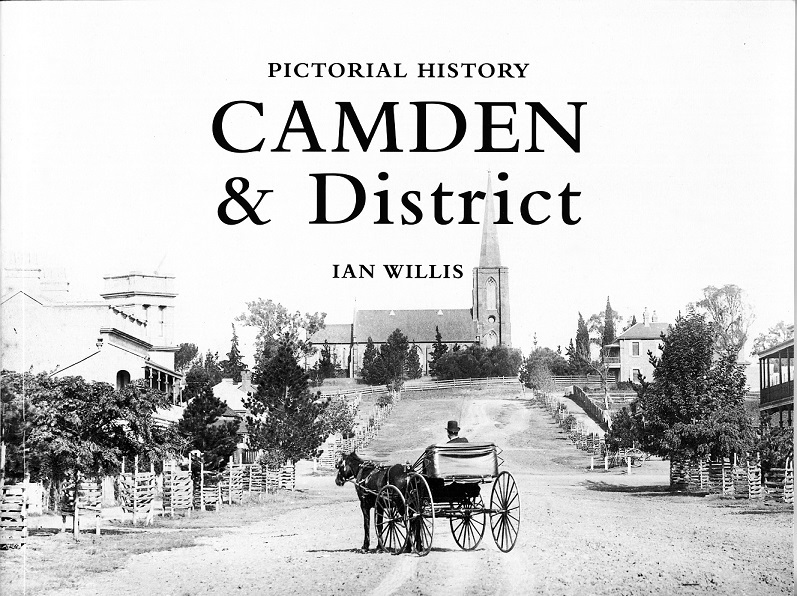








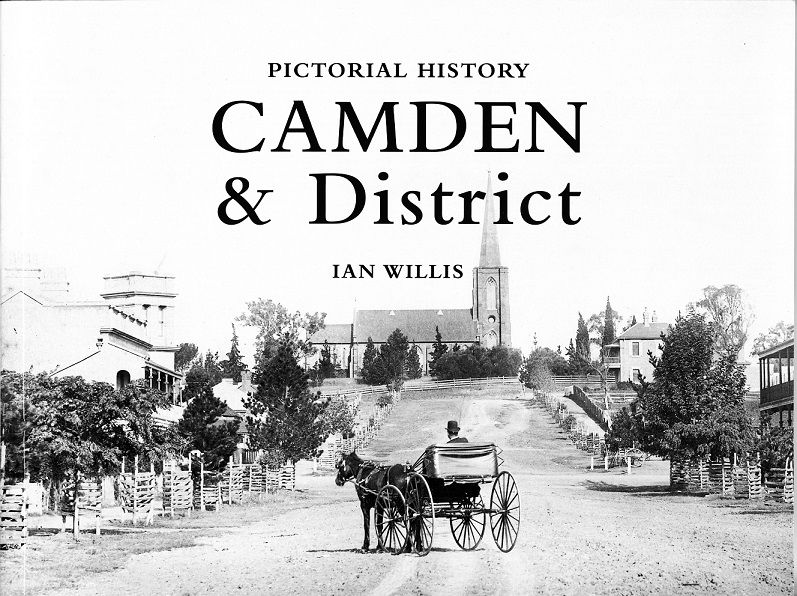

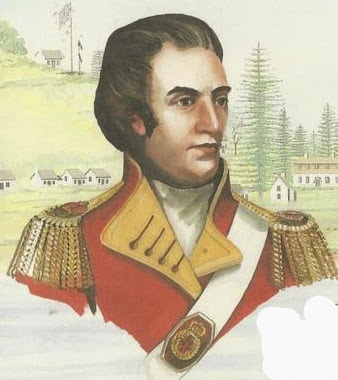




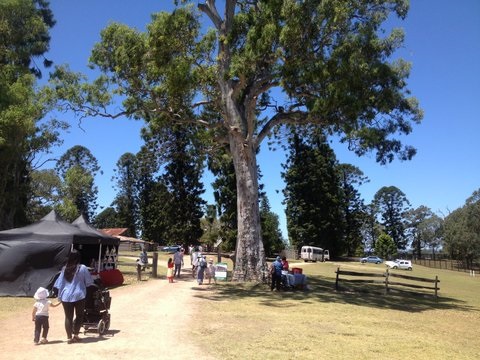





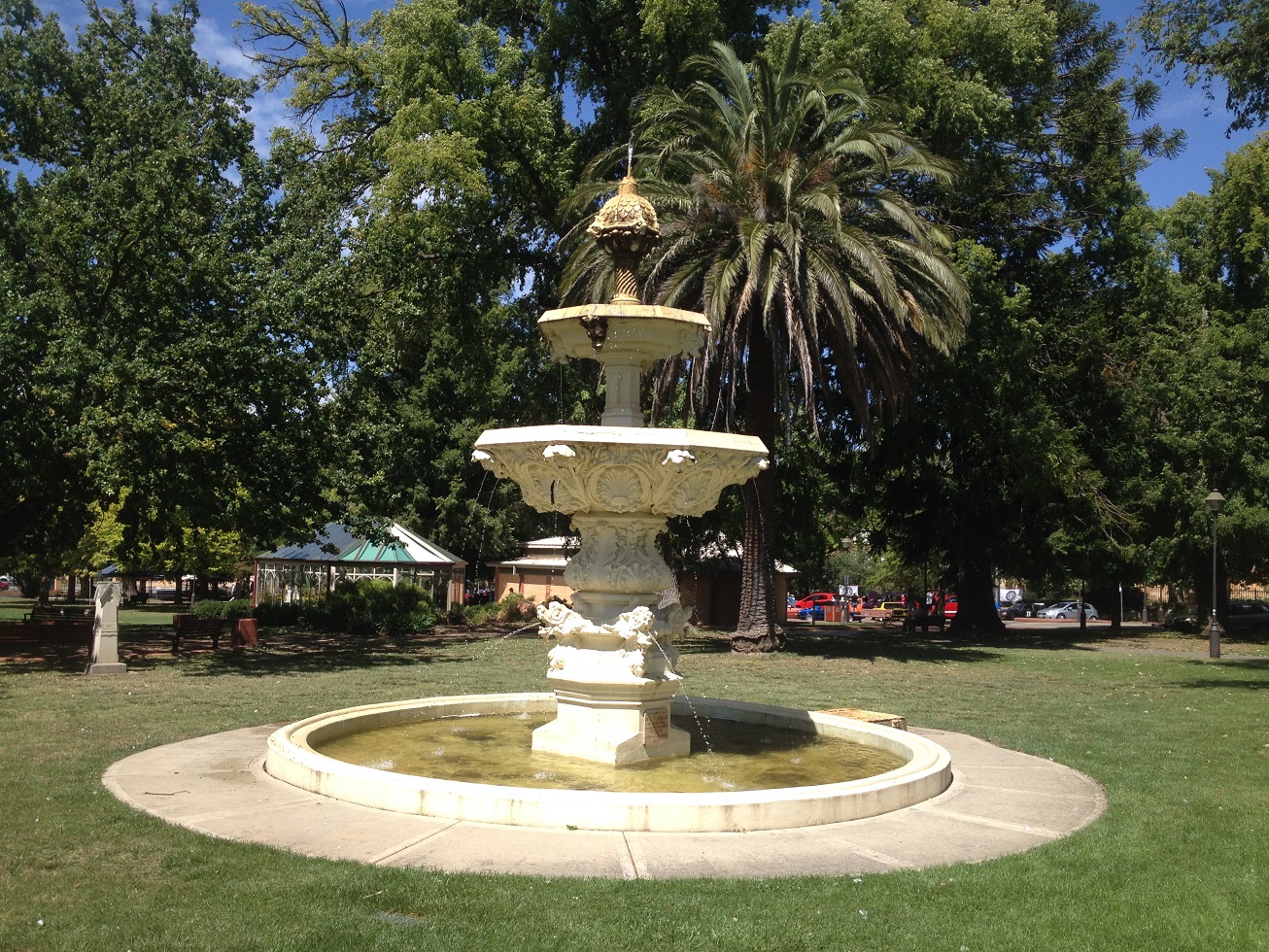
You must be logged in to post a comment.